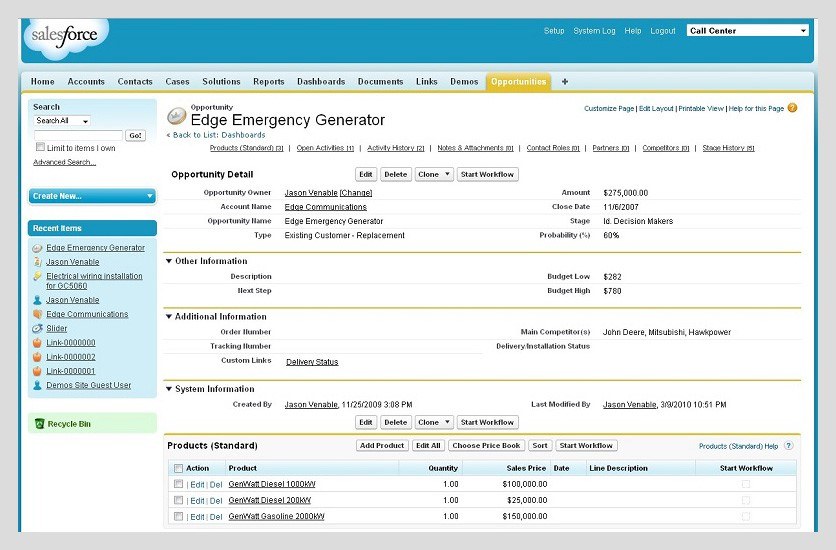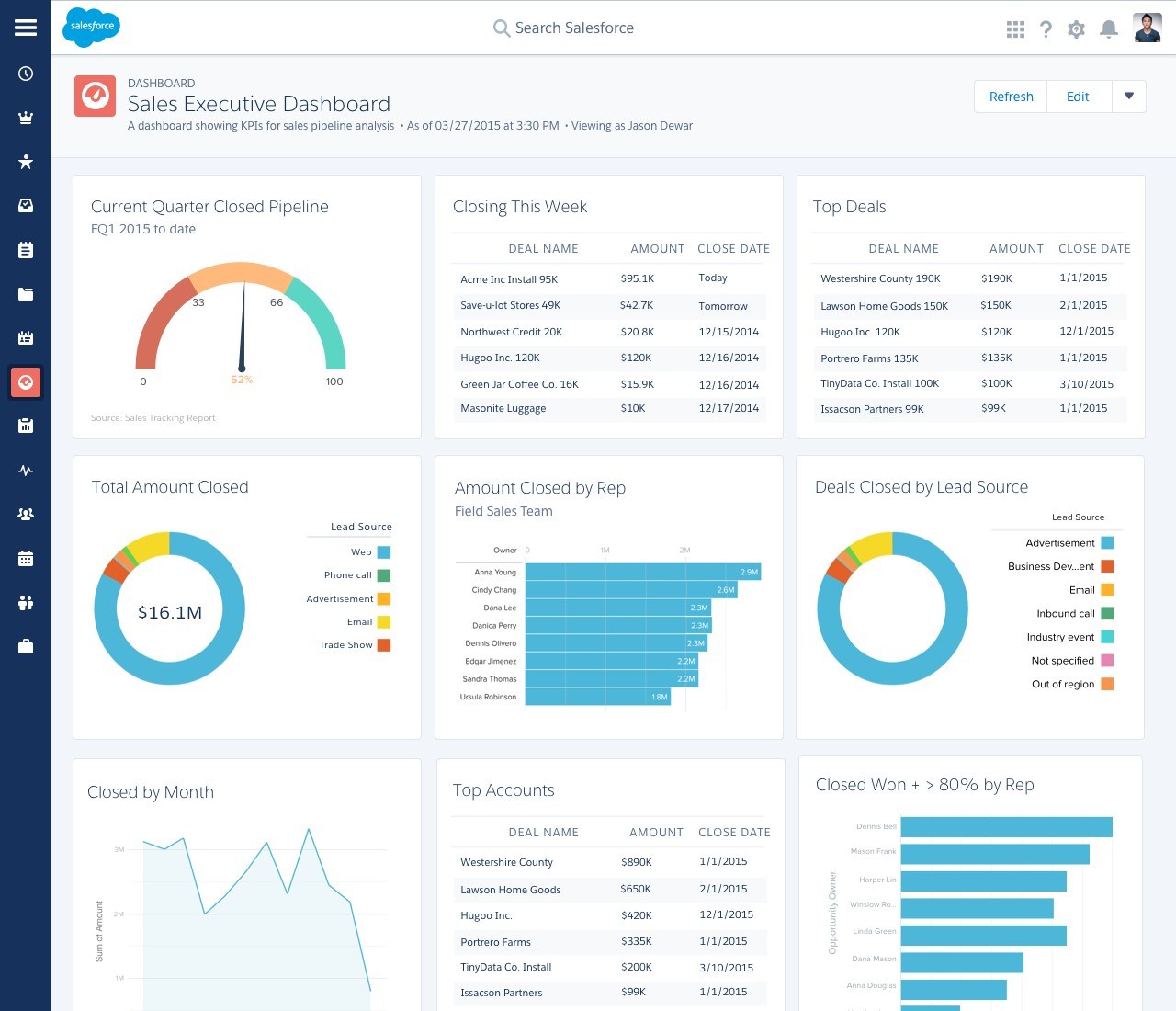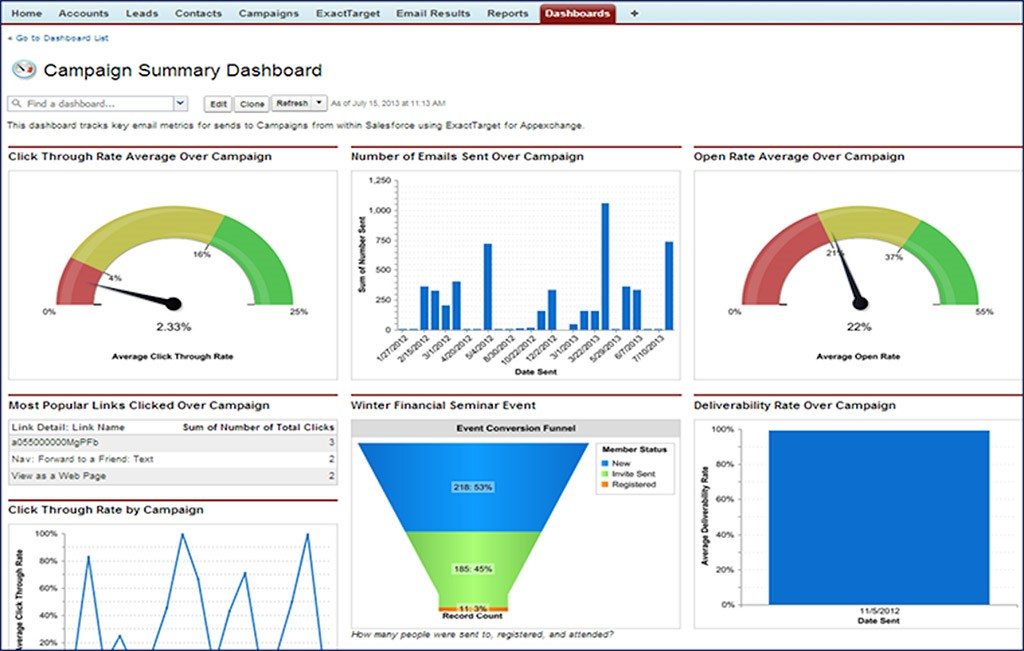Salesforce is Stealing Einstein’s Thunder

Salesforce’s ubiquitous CRM tool enables users to better monitor, understand, and serve customers, but will it be able to harness the power of insights generated by the IoT revolution?
Up until the year 2000, when Salesforce was created, firms used a variety of (mostly disorganized) ways to keep track of their customers. Their customers’ information was logged in different places – their address and contact information, for example, were kept in a spreadsheet; notes taken in meetings with the customer were perhaps kept in someone’s Outlook Calendar, and most importantly, products, projects, or services sold to such customer historically were buried in the records of the company’s billing department. For potentially new customers it was even harder to keep track of progress.
Transforming Firms into Truly Customer-Centric Operations
The Salesforce platform sought to change that by offering a sophisticated Customer Relationship Management (CRM) tool that for the first time, kept each customer’s data under a single Cloud-based roof, accessible to the entire sales team. By being able to view all prior interactions, touchpoints, and product / service transactions between a company and its customers, salespeople became much more effective at following up, anticipating customer needs, and ultimately improving customer satisfaction as well as adding new customers. [1]
Example of a Potential New Customer’s Profile [2]
But CRM was only the beginning. Salesforce developed similar platforms for marketing automation and customer service and support. It offered managers the ability to track opportunity pipeline and marketing campaign performance, as well as analytics tools to identify trends and productivity enhancement opportunities. The power of the platform has transformed the company into a $6.7bn revenue business. [1]
Sales Pipeline Analytics Screenshot [3]
Marketing Campaign Screenshot [4]
How does Salesforce make money?
Salesforce has a SaaS operating model, deriving its revenues from (a) subscription fees paid by its customers to access its enterprise cloud services, (b) customer support fees, and (c) professional services related to implementing its solutions for its customers. Its customers’ information is stored on the cloud, accessible anywhere and backed up by data centers around the world with the highest security measures, affording its customers the peace of mind that its valuable information will never be lost or destroyed. [1]
The platform also offers unique customization capabilities, making it applicable to all industries, from private equity to music to industrial robots.
Staying ahead of the curve by incorporating the Internet of Things (IoT)
In October during its annual Dreamforce expo, Salesforce announced an exciting array of new products in artificial intelligence (“Einstein”) and IoT data integration (“Thunder”). [5]
The internet of things represents a revolution in information technology by packing consumer and industrial devices with microcomputers and sensors. These generate massive volumes of data that many companies collect but few have harnessed successfully so far, because there is simply too much data and the devices often speak different languages. Salesforce aims to change that with its “Thunder IoT Cloud” offering. [6]
Thunder allows users to connect data from IoT to records in Salesforce, enriching customer’s profiles by layering in information about the products they are using, real-time. Thunder’s processing engine can “ingest billions of events from connected devices and trigger personalized engagements with customers.” For example, a robot in a factory can stream data indicating its arm is out of position, triggering an alert for maintenance or repair on the robot manufacturer’s Salesforce, before the customer may have noticed. The robot manufacturer could also visualize real-time the state of all its robots, release software updates remotely, and fix issues as they arise. [6]
Complementing its IoT solution, Salesforce is keenly aware that modern companies increasingly need data scientists to sift through the Big Data resulting from IoT. Thus, it is offering an AI machine learning solution called “Einstein” to enable companies to automatically draw customer insights, build predictive models, and proactively recommend best next actions. [7]
Conclusion
Salesforce was a disruptor of the antiquated sales model, where each salesperson maintained customer relationships by reacting to requests rather than anticipating them. Its platform enabled teams to track performance and keep key information organized to make better, more informed decisions. IoT presents an opportunity to do just that for product performance, enabling them to harness the data their connected devices are generating to provide customers with the perfect experience.
However, in pursuing Thunder and Einstein, Salesforce is undertaking its biggest challenge yet – it is trying to compete with IBM Watson on artificial intelligence and with Siemens, Google, Microsoft and others in big data interpretation. Taking on both technological fronts simultaneously while being less well capitalized than such competitors is a bold move. It should carefully monitor their progress and hedge itself by developing apps that would enable it to partner with these companies and offer their technology through the Salesforce platform. That way they can continue to offer the best CRM tool, their core value proposition, regardless of who wins the IoT race.
Word Count: 789
~*~*~*~*~
Sources
- Salesforce.com, “Salesforce.com Annual Report 10-K 2016”.
- Image from: http://www.brainsell.net/software/crm/salesforce/
- Image from: http://www.infoworld.com/article/2976661/application-development/salesforces-aura-open-source-to-a-point.html
- Image from: https://hubexchange.s1.marketingcloudapps.com/listing/exacttarget/salesforce-integration
- PR Newswire, “Salesforce Empowers Customer Trailblazers With the Next Generation of the Salesforce Customer Success Platform”, Oct. 4, 2016.
- Salesforce IoT Cloud, “The Rise of Systems of Intelligence,” 2016.
- Between the Lines, “Salesforce aims to combine Einstein, Quip, IoT into ‘one platform’ approach”, Oct. 4 2016.






Really interesting article, Ilan. I agree with you that this seems like an extremely ambitious, if not overly ambitious, target for Salesforce, whose core business is not in this space. I’m curious how they’ve rationalized making this investment knowing that better equipped competitors are out there working on IoT solutions. You mention the application of providing real-time data from the manufacturing floor to flag problems more quickly. Although these applications seem extremely valuable, especially in companies that use machines to interact with its customers’ machines, I wonder how far away the solution is getting from sales and into the trenches of operations. Although from a manufacturer’s perspective it would be transformational to have all of the company’s data interconnected into one system, I think IoT’s forte in operations does not align well with Salesforce’s core business in sales management.
My main concern with the entire Salesforce offering is privacy. Yes, the data is stored in highly secured data centers, but that doesn’t hinder Salesforce or its customers to actually sell end-customer profiles to 3rd parties. Adding data from IoT devices makes privacy issues even more severe. In most cases, the end-customers do not know what type of data is actually stored and who as access to it. Providing this visibility, would be one measure Salesforce could take to improve in this area.
Hi Ilan! Thanks for the thoughtful article on Salesforce. I think you’ve identified the key success factor here; Salesforce’s ability to offer ancillary services to support IOT platforms and devices will ensure its sustained leadership in the long run. Salesforce has always been a SaaS company, and it has the opportunity here to be the service provider of choice supporting software implementations and maintenance for best-in-class IOT offerings from Google / Amazon / Samsung. Going to service provider route will ensure that Salesforce can participate in an asset-light manner in the large and growing IOT market, without the continuing and expensive and high-risk R&D investments that it would need to develop its own IOT products / software.
Great post overall and it raises some interesting issues with Salesforce’s approach to the market. Salesforce has undergone a number of transformations since its launch, but has seemingly followed the same process of many of the other major “as-a-service” providers like Amazon, Microsoft, and Google. Like the others, it began as a SaaS offering, eventually offering access to APIs that allowed it connect to other programs, furthering this by offering access to the underlying systems/code that composed the platform itself. It was this last jump that really opened the doors and seems to have come concurrently with its exploration of other possible sales avenues and service capabilities. By opening the platform and allowing others to develop solutions, they also opened up a marketplace for others to sell offerings on top of their platform. I think this move allowed them to more easily tap into these other new offerings like IOT and machine learning, as other developers and communities can help augment some of the research and analysis on that front.
Great article Ilan! Salesforce is clearly a pioneer in SaaS and deserves it success. How do you explain that other CRM players like SAP who haven’t completely switched to SaaS are still successful? Apparently, having “old school” software distribution is still valuable in today’s economy, interesting!